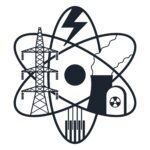Colorado State University (CSU) has a history of environmental commitments and is working to reduce its role in climate change. CSU has tracked their GHG emissions for over a decade and is aware that energy comprises the vast majority of their GHG footprint (over 75% in 2022). The university has committed to 100% renewable electricity by 2030 and carbon neutrality by 2040. As part of their GHG reduction efforts, CSU has been adding solar photovoltaic systems to its campuses, including the use of Power Purchase Agreements (PPA), which have proven to be a powerful tool for bringing large quantities of solar to campus.
Process
In 2021, CSU signed a PPA with Solaris Energy, Inc. who in turn contracted with a third-party vendor to install 20 new solar PV systems. This project was developed through a Power Purchase Agreement; Solaris Energy financed the projects and the third-party vendor designed and built the systems. Upon project completion, Solaris will assign the systems and contract to a long-term asset holder. Through the 28-year contract, the long-term asset holder will then own, operate, and maintain these systems, while CSU will pay a fixed rate for the electricity generated. A PPA removes the initial capital costs from CSU, hedges against future electric rate increases, and lowers risk for CSU, while decreasing the environmental impact of CSU’s electricity use – a key to CSU’s environmental commitments.
Colorado State University followed a five-step process for solar PPA contracting and installation.
Step 1: Site Assessments
The first step for any solar project is a detailed site assessment to determine where solar installations are feasible. CSU’s key considerations for roof mount systems included buildings with roofs less than five years old, preferably south facing, shade-free, and with minimal rooftop equipment. For ground mount systems, ideal areas should be open, large, relatively level, shade-free, and close enough to interconnection points. Note that one ground mount site was selected for its potential to have dual use as a sheep pasture – CSU’s agriculture researchers were partners in selecting this site. Parking canopies were also assessed and included in the initial list of potential sites, but at the time of design, this option became cost prohibitive.
For preliminary site assessments, CSU utilized a tool from Google called Project Sunroof. This technology maps rooftops and gives a rough estimate of the square footage available for solar panels and usable sunlight per year. This tool provides a base-level estimate for rooftop solar potential. Another estimation tool that CSU used was Google Maps. By locating a specific roof or land area of interest and outlining the basic shape, Google Maps can calculate the total area. It is essential to understand that rooftops will have substantially less space available than the estimation, as there are edge setback requirements and clearance requirements from rooftop equipment that can shade panels. Since these tools have limitations, a more in-depth analysis must be done by the developer during project design.
Step 2: Drafting the Request for Proposals (RFP)
After CSU outlined feasible areas for installations, staff drafted a Request For Proposals (RFP) to solicit vendor partners and outline expectations for the project, timeline, contract terms, and bidding criteria. CSU’s RFP included the following elements:
|
RFP Element |
CSU’s Approach |
|
List of potential sites |
CSU identified both rooftop and ground mount sites. Parking canopies were also included in the initial list but were eliminated during the design phase due to their high cost. |
|
Information on connections to the electric utility |
CSU identified the utility provider associated with each potential site. |
|
Rate terms for the PPA |
CSU required a fixed rate (0% escalator) to hedge against future electric rate increases. |
|
Who retains the environmental attributes (RECs) from the installations? |
CSU is using these sites to achieve environmental goals so required that the university retain the renewable energy credits (RECs). |
|
Specific terms for end of contract |
CSU required the following options for end of contract term:
|
|
Specific terms for working conditions on site |
CSU considered the following conditions:
|
|
Battery Storage (alternate) |
CSU left the door open to adding battery storage in the RFP; however, at the time the project was initiated, benefits of storage did not outweigh the costs. |
CSU expected vendor partners to provide the following details in their bids:
|
Bid Element |
CSU’s Approach |
|
PPA price and term |
CSU had all potential vendor partners bid on the total package of sites, for an apples-to-apples comparison, but also requested they present an optimal package based on the best sites, overall size, and costs. Potential vendor partners were asked to provide the fixed rate for the PPA term and term length. |
|
Developer information |
CSU asked potential vendor partners for information about their relevant experience including the number and MW rating of comparable projects in the past 10 years; key personnel experience; indicators of financial strength and capability for duration of the contract; and evidence of cooperation with local utilities. CSU noted that solar equipment carries very long warranties and wanted to ensure its vendor partners would be around to honor those warranties. |
|
Project information |
CSU asked potential vendor partners to include the following information regarding the project: estimated capacity for the total project and per site; number of panels to be installed; number of inverters and inverter sizing; mounting type, approximate tilt angle, and azimuth; warranty information; and storage elements if included in the proposal. |
|
Academic or research opportunities |
As an institution dedicated to sustainability and environmental education, CSU asked potential vendor partners to provide information about potential research or academic opportunities in relation to the project. This was not a requirement for selection but rather used as an evaluation tool for merit of the proposal beyond price and experience of the potential vendor partner. |
Step 3: Standardizing and evaluating bids
Based on past experience, CSU knew it was important to have a standardized project package and process to evaluate bids. Creating the standardized total project that each potential vendor partner had to price allowed CSU’s team to compare the vendors’ cost structures equally. CSU kept the additional criteria from its RFP in mind throughout the evaluation. Through lessons learned, CSU implemented the following actions to improve standardization and evaluation:
|
Evaluation Action |
CSU’s Rationale |
|
Standardizing a scenario for direct comparison between potential vendor partners. |
CSU conducted a previous solar solicitation that failed because they issued a bid to “maximize solar on campus”. The potential vendor partners had to invest an enormous amount of time evaluating roofs without any information on roof age, long-term plans for buildings, or even building ownership. This resulted in RFP responses that were impossible to evaluate because potential vendor partners were bidding on different packages. |
|
Establish an RFP team to evaluate the bids that includes the appropriate subject matter experts.
|
CSU found it valuable to include a CSU project manager (PM) in the selection process. While the installation of any one site is relatively quick, a large project with multiple sites can take many months to accomplish (the construction phase of CSU’s 20 sites took almost two years). Having a PM to help guide a large project is critical to success. Other key team members are electrical engineers and project advocates. It is always necessary to have legal support. |
|
PPA Price |
CSU evaluated the fixed-cost bids against historic and projected electricity rates from the local utility. |
|
The RFP team needs to evaluate the bids based on all the criteria outlined in the RFP, not solely on price. |
CSU’s bid criteria weighted experience equally with price. A PPA relationship lasts for decades, so CSU wanted to have a competent, reliable, stable vendor partner. |
Step 4: Awarding the bid and negotiating the PPA
Once the RFP team selected a vendor partner (in this case co-developers Solaris and Namaste) and all appropriate preliminary agreements were signed, the list of potential projects underwent closer examination to remove any sites that failed to meet additional criteria. Specifically, the vendor partner assessed:
- Structural integrity of the roof
- Pathways to get conduit from the roof to the electrical room
- Electrical capacity of interconnection point
- Potential interference with or shading from trees, equipment, vents, and architectural features
- Solar energy harvest potential
- Specific costs for each site
The vendor partner then presented packages of projects with financing terms. This allowed CSU to pick the package that best met its financial and environmental goals. The final PPA contract then had to undergo legal review and obtain signatures from all parties.
Step 5: Building the systems
The CSU solar project manager worked with the vendor partner to navigate detailed design, code review, roof warranty verification, utility review, construction phasing and timelines, and concerns unique to working on campus. Having an established relationship with the local utilities helped this stage of the process, as approval for interconnection to the local utility is required for any solar project. A good solar developer will already have relationships with utilities and will have maneuvered through those requirements multiple times.
Important steps in the installation process:
- Establish a timeline for the projects. Engage building occupants to establish appropriate schedules for buildings with specific needs (for example – no construction during finals week).
- Weekly project team check-ins were essential to keep this schedule current and all stakeholders up to date.
- Scheduling crane operations was particularly critical because of disruption to roads, parking, pedestrian routes, and building entrances.
- To control costs, the vendor partner needs a close-by area for a construction trailer and equipment laydown. CSU was fortunate to have space to accommodate this need.
- Engage the roofers who own the warranty on each roof for inspection, install fall protection anchors as needed, flash any roof penetrations, and recertify the roof warranty after installation.
CSU and their vendor partner encountered several challenges during installation:
- Special scheduling due to noise concerns for building occupants.
- Weather delays due to wind, extreme temperatures, and snow.
- The construction window was April 2021 through spring 2023. The project had its share of supply chain issues precipitated by the global pandemic (e.g., the backorder of simple roof anchors held up one site for months). However, having a strong partner helped CSU maneuver through those challenges with few delays to the overall project.
Measuring Success
Extra upfront time spent in site assessments and RFP/contract development allowed this latest project to progress without any major issues. This enabled the selection of strong, collaborative partners who utilized a PPA that met CSU’s key desires – a fixed rate providing millions in long-term cost savings and the reduction in the environmental impacts of electricity use.
Outcomes
With a current total of over 40 solar arrays across eight campuses, CSU knows that solar systems are a reliable and low-maintenance way to offset carbon emissions and demonstrate progress toward long-term environmental goals. This project will nearly double CSU’s solar capacity by adding over 4.25 MW of capacity.
This column originally appeared as a blog on the Better Buildings website.
 The Better Buildings Solution Center houses over 3,000 resources shared by Better Buildings partners and other stakeholders. These replicable solutions help organizations bolster their bottom line, advance technology innovation, create jobs, and spur energy efficiency investments.
The Better Buildings Solution Center houses over 3,000 resources shared by Better Buildings partners and other stakeholders. These replicable solutions help organizations bolster their bottom line, advance technology innovation, create jobs, and spur energy efficiency investments.
NULL





